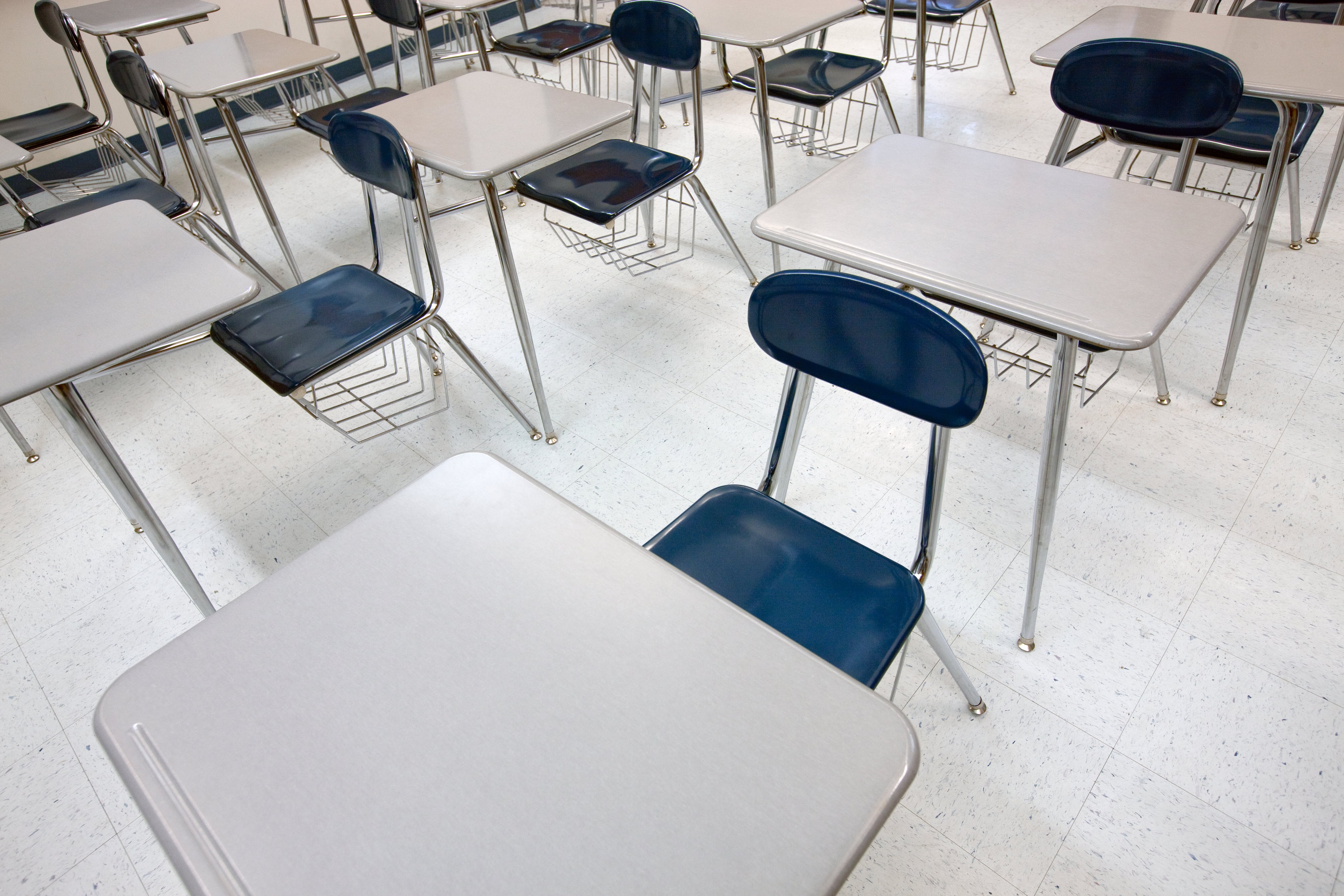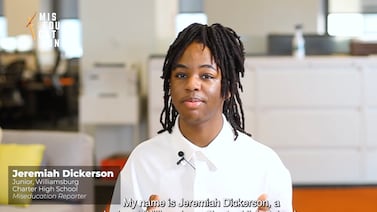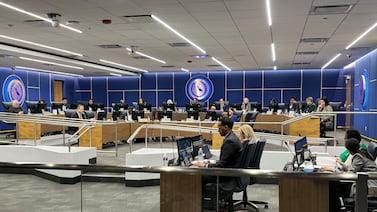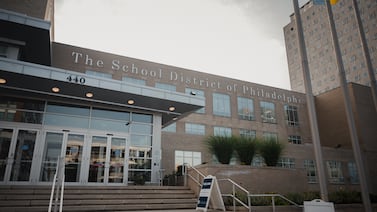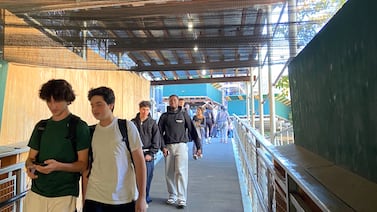Two disparate small Upper West Side middle schools have found their fates intertwined as city officials seek to merge them, despite loud community protests.
One is a progressive institution serving overwhelmingly Black and Latino students, where more than 80% of students qualify for free or reduced-price lunch. The other is known for its French dual language program and has a significantly higher share of white students. Just under 60% of its students qualify for free or reduced-price lunch.
Officials say the merger could help protect both schools, but to parents and staff at West Side Collaborative, the plan could mean a fatal loss of identity — as community members fear its leadership, approach to teaching, culture, and name could be washed away as it is absorbed into the larger school.
The progressive middle school has fostered a passionate community network, even as its size has dwindled to fewer than 100 students in recent years. The merger would see its students and faculty join Lafayette Academy, roughly half a mile away, in a move the city believes would shield students from funding concerns that stem from their smaller enrollment losses.
The merger comes as the latest sign that some of the city’s smallest schools are increasingly under threat even as families sing their praises, as the city faces steep enrollment declines and a looming fiscal cliff of federal relief funds. The Upper West Side fight follows a battle over a Washington Heights middle school earlier this year, and despite fierce pushback, the merged school may soon become a reality with the Panel for Educational Policy set to vote Wednesday.
Enrollment declines leave few options
Enrollment figures paint a stark picture. Over the past five years, West Side Collaborative has seen a 58% decline in enrollment, with further projected losses expected to shrink its current student body of about 75 students next year, according to city figures. Lafayette Academy, meanwhile, serves about 158 students. Because the city calculates school funding in part based on how many students enroll, a declining student population can mean a loss of funds, too.
“The merger is a reaction to a real trend — nobody will deny that enrollment across New York City is down,” said Paul Kehoe, a teacher at West Side Collaborative. “But in effect, this would be a closure.”
The school developed a set of progressive practices over decades, Kehoe said, like data-driven academic intervention services that catch students falling behind and a coaching period with student-led conferences to promote executive functioning and goal setting.
“The idea that you can pick up those practices and transplant them into another school and have them carried off with the same efficacy and deft touch that comes with experience is just not viable,” he said. “That’s just not a thing that happens.”
And at Lafayette Academy, community members said they were concerned by the lack of concrete details on how staffing and other decisions would shake out.
Stefania Puxeddu Clegg, a parent at the school, raised concerns about potential overcrowding with the influx of students a merger might bring, as well as the potential for Lafayette Academy to lose its small-school feel. And despite an email from the superintendent noting that Lafayette Academy’s principal would head the new merged school, Puxeddu Clegg and other parents remain concerned that such assurances were not included explicitly in the language of the proposal. (DOE projections also say the merger would not bring student levels over capacity in the school’s building.)
In a statement, a spokesperson for the city’s department of education said “meeting student needs” is at the “forefront” of any decisions.
“The district superintendent and his team have worked to engage the community in regards to this merger for months, and while it’s still in the proposal phase, if approved by the PEP, it is designed to give students the best access to new programs and additional supports,” the spokesperson said.
Tensions at both schools remain high
The clash between the school communities and the city surfaced at a public hearing this month, as parents from both schools repeatedly spoke against the merger.
“It was a disaster,” said Kaliris Salas-Ramirez, a member of the city’s Panel for Educational Policy. “I was so optimistic, and then everybody at the joint public hearing was like, ‘Yep, we’re in opposition.’”
Though Salas-Ramirez understood community concerns, she added she expected the proposed merger to pass. “In terms of the numbers, it’s just really difficult,” she said.
A merged school could see a jump in funding, as more students are housed under one roof, and as the demographic shift could bring federal funding for low-income students to Lafayette Academy. Still, staff members may be excessed in the move, and it remains unclear how many families from West Side Collaborative would choose to enroll at the merged school.
“None of our parents want to go,” said Morana Mesic, a parent at West Side Collaborative and president of the school’s PTA. “If the merger goes through, our parents want a transfer.”
The relationship between the two school communities has been fraught with tension among parents, she added. In a meeting, Mesic said she took issue with Lafayette parents stating that the higher needs and lower test scores of students at West Side Collaborative might affect current students at Lafayette.
As an alternative to a merger, West Side Collaborative parents and staff have pointed to recent enrollment gains due to new students entering the city as asylum seekers have flocked to New York as one possible avenue to bolster the student body. But officials noted during the public hearing that those gains may not persist as families find more permanent housing.
Jeanie Ahn, a member of the local Community Education Council and a liaison for West Side Collaborative, said parents she’s spoken to have been overwhelmingly against the merger. The difficulty of the situation has been intensified by the expedited timeline of the process, she added. The first community engagement meetings about the merger took place in January.
“We are listening to the families and their concerns, but also understand the realities of the situation at both schools,” Ahn said, adding it would be ideal to have more time to develop a proposal that at least some affected families approve of. “If every single voice you hear from in both schools says this merger is not the solution, it’s going to be a really tough vote for the PEP.
“When it comes to these small, close-knit communities that are so tight, it really does feel like you’re breaking up families,” she said.
Julian Shen-Berro is a reporter covering New York City. Contact him at jshen-berro@chalkbeat.org.

